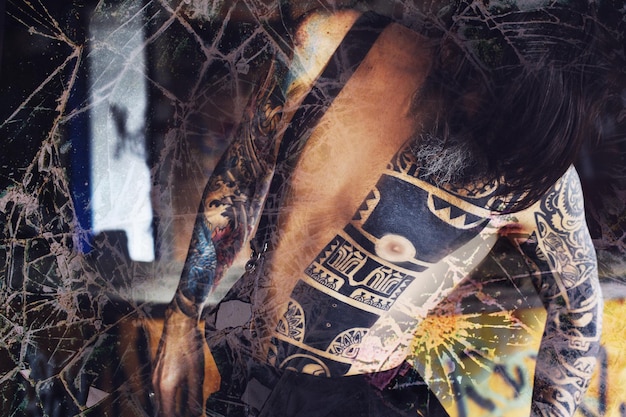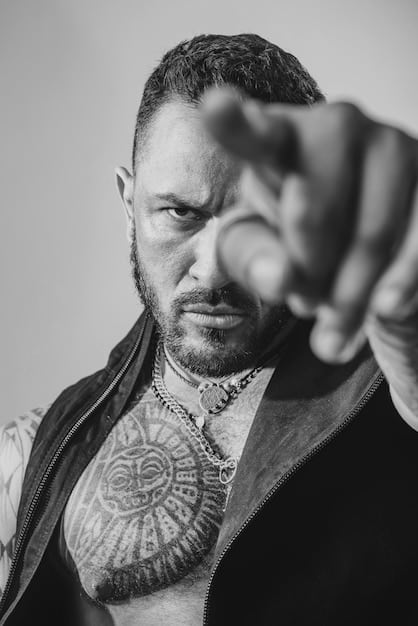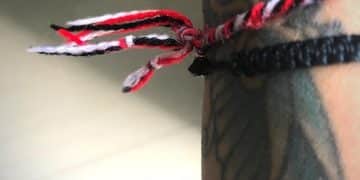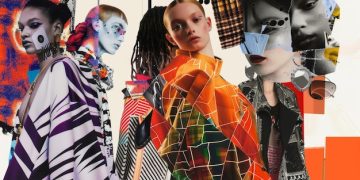Body Modification as Art: US Subcultures & Cultural Significance

Body modification as art encompasses a wide range of practices, from tattooing and piercings to scarification and implants, serving as unique self-expressions deeply embedded within various US subcultures, reflecting their values, identities, and cultural narratives.
Body modification goes beyond mere aesthetics; within the diverse landscape of US subcultures, it acts as a powerful form of artistic expression. This article explores the extreme aesthetics of body modification as art, and the cultural significance they hold within US subcultures.
Understanding Body Modification as Art
Body modification, in its broadest sense, refers to the deliberate altering of the human body for non-medical reasons. When viewed through an artistic lens, these modifications transcend mere cosmetic enhancements, becoming profound statements of identity, rebellion, and cultural affiliation.
This perspective reframes practices like tattoos, piercings, scarification, and even more extreme modifications as artistic mediums. The body becomes the canvas, and the individual the artist, expressing themselves through deliberate and carefully considered alterations.
Historical Roots of Body Modification in Art
The practice of body modification is nothing new. Throughout history, various cultures across the globe have utilized it for spiritual, social, and aesthetic reasons. Understanding these roots helps us appreciate its contemporary artistic expressions.
- Ancient Rituals: Many indigenous cultures employed scarification and tattooing as integral parts of initiation rites and spiritual practices. These modifications marked status, told stories, and connected individuals to their ancestors.
- Sailors and Tattooing: In more recent history, sailors adopted tattooing as a way to commemorate voyages, display their travels, and create a sense of belonging within their maritime culture.
- Early 20th Century Circus Performers: Individuals with heavily tattooed bodies or unique modifications often found work in circuses and sideshows, captivating audiences with their altered appearances.

These historical examples laid the groundwork for the contemporary understanding of body modification as a means of self-expression and cultural identity, evolving into the forms of artistic expression we see today.
Tattoos: Narratives Etched on Skin
Tattoos are perhaps the most widely recognized form of body modification. They are more than just images; they are often deeply personal narratives etched onto the skin. Within US subcultures, tattoos can signify membership, express beliefs, and commemorate experiences.
The artistry of tattooing has evolved significantly, with talented artists pushing the boundaries of technique and design to create incredibly detailed and expressive pieces. Styles range from traditional Americana to hyperrealism and abstract art, reflecting the diverse tastes and stories of those who wear them.
Subcultural Significance of Tattoos
Different subcultures assign different meanings and significance to tattoos. Examining these meanings reveals the complex role that tattoos play in shaping identity and belonging.
- Biker Culture: Tattoos in biker culture often feature symbols of freedom, rebellion, and loyalty to the group. Common motifs include motorcycles, skulls, and emblems of the biker club.
- Punk Rock: Punk rock tattoos are often characterized by DIY aesthetics, political statements, and expressions of individuality. Imagery can range from band logos to anti-establishment slogans.
- Skateboarding: Skateboarders often use tattoos to display their passion for the sport and their connection to the skateboarding community. Designs may include skateboards, logos of skate brands, and imagery related to skate culture.
These subcultural affiliations, expressed through tattoos, solidify group identity and establish a visual language understood within the community.
Piercings: Adornment and Identity
Piercings, another common form of body modification, involve puncturing or cutting a part of the body and inserting jewelry. While often seen as a purely aesthetic choice, piercings can also carry significant cultural and personal meaning, especially within subcultures.
The location, type, and style of piercing can all contribute to the message being conveyed. From subtle ear piercings to more elaborate facial or body piercings, individuals use these adornments to express themselves uniquely.
The Cultural Context of Piercings
The meaning of piercings varies widely across different subcultures and personal preferences. Exploring this context reveals the nuanced role that piercings play in self-expression.
Gauged earlobes, once associated primarily with tribal cultures, have become a popular form of self-expression in modern subcultures. Similarly, nose piercings, historically significant in many cultures, have gained traction as symbols of individuality and rebellion.
Scarification: Art Through Skin
Scarification, the process of creating scars through controlled cutting, burning, or abrasion of the skin, is a more extreme form of body modification. It’s a practice deeply rooted in various cultures, often used to mark significant life events, social status, or spiritual achievements.
In the US, scarification is found in some subcultures as a form of body art and a statement of personal strength and resilience. The process is often painful and requires careful aftercare to achieve the desired results. The permanence of scars makes this a profound and intentional form of self-expression.
Scarification as a Rite of Passage
While less common in mainstream US culture, scarification’s historical significance as a rite of passage provides insight into its deeper meanings.
In some African tribes, scarification is used to mark a young person’s transition into adulthood. The patterns and designs often tell a story about the individual’s lineage, accomplishments, and social standing.

Implants and Suspension: Pushing the Boundaries
Implants and suspension represent the more extreme end of the body modification spectrum. Implants involve surgically inserting objects under the skin to create three-dimensional shapes, while suspension involves hanging the body from hooks pierced through the skin. These practices are not for the faint of heart and are often performed by highly skilled and experienced practitioners.
Those who choose these modifications often seek to push the boundaries of what it means to be human, challenging conventional notions of beauty and self-expression. It’s important to appreciate these practices within the context of personal choice and artistic freedom.
The Performance Art Aspect
For some, implants and suspension are not just about physical alteration, but also about performance art. The act of undergoing these modifications can be a powerful statement in itself.
Body suspension, in particular, is often performed in front of an audience, creating a visceral and emotional experience for both the participant and the viewers. This performance aspect amplifies the artistic and expressive nature of the modification.
Ethical Considerations and Cultural Appropriation
As body modification gains popularity, it’s important to consider the ethical implications and the potential for cultural appropriation. Many forms of body modification have deep roots in specific cultures, and it’s crucial to approach these practices with respect and awareness.
It’s essential to avoid trivializing or misrepresenting cultural traditions and to understand the historical and social context behind different forms of body modification. Informed consent, safe practices, and respect for cultural heritage should always be paramount.
Research and Respect
Before undergoing any form of body modification, it’s crucial to research the history and cultural significance of the practice. This knowledge helps to ensure that the modification is done respectfully and ethically.
- Learn the History: Understand the origins of the modification and its significance in different cultures.
- Choose Practitioners Carefully: Ensure that the practitioner is experienced, qualified, and respectful of the cultural context.
- Avoid Cultural Appropriation: Be mindful of the potential to appropriate or misrepresent cultural traditions.
| Key Aspect | Brief Description |
|---|---|
| 🎨 Artistic Expression | Body modification as a canvas for self-expression and identity. |
| 🛡️ Subcultural Identity | Significance within US subcultures like biker, punk, and skateboarding communities. |
| ⚠️ Ethical Considerations | Importance of cultural sensitivity and informed consent. |
| 🔄 Evolution of Practices | From ancient rituals to modern artistic expressions. |
Frequently Asked Questions
▼
Body modification art involves intentionally altering the body through practices like tattoos, piercings, scarification, and implants. These modifications serve as forms of personal expression and creative communication, often reflecting cultural values and identities.
▼
Tattoos can express cultural identity by incorporating symbols, images, or narratives that are specific to a particular group or subculture. These designs can signify membership, beliefs, and shared experiences in a visible and permanent way.
▼
Cultural sensitivity is crucial because many body modification practices have deep historical and cultural roots. Approaching these practices with respect and awareness helps avoid cultural appropriation and ensures the traditions are honored appropriately.
▼
Ethical considerations include informed consent, ensuring practitioners use safe techniques, and respecting the cultural meanings behind different forms of body modification. It’s important to avoid trivializing or misrepresenting cultural traditions during the process.
▼
Body modification has evolved from ancient rituals and tribal practices to modern forms of artistic expression. Throughout history, it has served various purposes, including spiritual rites, social status markers, and contemporary methods of personal and subcultural identity.
Conclusion
Body modification as art is a multifaceted phenomenon that reflects the diverse ways individuals and subcultures in the US express themselves. From tattoos and piercings to scarification and implants, these practices serve as powerful statements of identity, rebellion, and belonging, continuously pushing the boundaries of artistic expression. As these practices evolve, it’s crucial to approach them with respect, awareness, and a deep understanding of their cultural significance.





